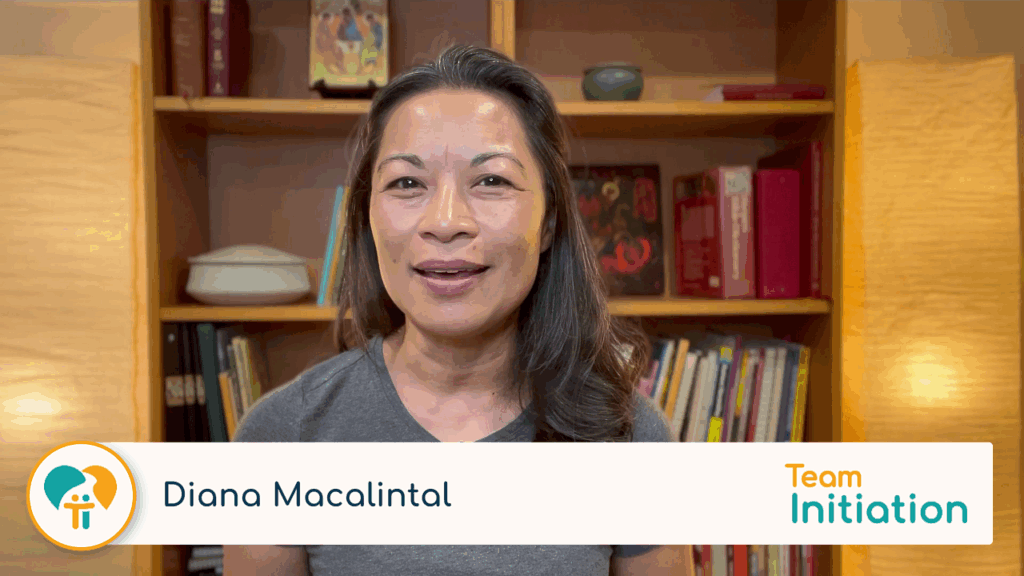![Big magic - Grosser Zauber by Maggi 94 [Flickr] RCIA (Rite of Christian Initiation of Adults) image posted by TeamRCIA](http://farm3.staticflickr.com/2425/4025327194_5f41441d91.jpg)
(This is a guest post by Linda Khirallah Porter, MTS.)
As Director of the Office of Faith Formation for the Diocese of Tyler for 20 years, I have seen a transformation in RCIA. Our diocese is 26 years old, and we are presently under the guidance of our fourth bishop.
Bishop Herzig, our first bishop, was a stern father with a new family. Within the five years he was alive as our ordinary, we took baby steps in seeing parishes initiate the “RCIA.” Bishop Carmody, our ordinary for eight years, was like a tornado attempting to establish a Catholic presence in every county. Structure was not his focus, and when Bishop Corrada arrived for a twelve year episcopacy “RCIA” was transformed from a program to a process. Language defined its development and it became “Christian Initiation” and the structure began.
Catechumenate as the model for all catechesis
This process became the basis for all catechesis in the diocese. We are still working on implementing this vision. As Faith Formation Director, I was not thrilled to take on this process and tried to steer it to the Liturgical Commission. Our bishops always win out, however. Yet while Bishop Corrada’s vision was viable – initiation and integration into the life of the community, he had no more idea on how to accomplish this than I did. So we went to work.
A diocesan team was formed; parish teams trained, The 2000 Survey for this process was studied and we implemented seriously the integration aspect of our process. Let’s face it, as church we initiate people into our communities and then we “dump” them in many cases; or we initiate them into our autopilot Catholics who are not on fire with their faith and we lose them anyway.
Four focus areas to integrate initiates
To avoid these pitfalls we focused on four areas:
- Catechetical
- Organizational (parish education; after all the parish is the initiating community)
- Liturgical (rites)
- Spiritual
These were developed with households in mind not individuals. Our groups included lapsed Catholics, Hispanics transplanting to our diocese, non-Catholic Christians, and of course the unbaptized. So our formation targeted more groups than the traditional “RCIA,” but our rites remained true to the rituals.
I think this was the key to our success. The process began to take on a life of its own in the sense that the person in the pew was aware that we could baptize adults, we celebrate all sacraments within the community’s liturgy not separately, there was a dual theology of confirmation for Catholics and non-Catholic Christians, Quinceaneras became an event of evangelization, not a carrot to get sacraments done. Sacramental “preparation” became sacramental “formation” because it became evident that sacraments are not filling stations but the gateway to living the Christian life. Sacramental formation was taken out of the regular CCD classes.
Next-phase leadership
We are now in 2013 and Bishop Joseph Strickland, a native of our diocese, and a priest in our diocese all of his life, is now our local shepherd. He is a visionary, pastoral, and not the new kid on the block!!! In fact he just moved his office, and now wears different vestments for liturgy. He has taken on the role of leadership to take our diocese into the next phase.
He supports the baptismal catechumenate as the basis for all catechesis in the diocese, even if it is tough to implement. The formation we were doing before wasn’t working and there is a saying that insanity is doing the same thing over and over again and expecting a different outcome.
So we are trying to be less insane!!! How has this process affected the diocese? Just to name a few things in the last 10 years:
- The Tribunal developed training for canonical advocates to assist with cases. 21 individuals were formed over the course of a year available to parish teams.
- Quinceanera policy was revised. The girl does not have to be Catholic or registered with a parish. This is a sacramental therefore: completing Sacraments of Initiation should not be a requirement to celebrate this event. Positively we have seen entire families and escorts move into the process following the formation.
- Confirmation was moved to prior to Eucharist. This had the most dramatic effect on every aspect of religious education in a positive way to include families as primary educators, to develop more comprehensive youth programs, and encourage lifelong formation.
Where are we going from here? Bishop Strickland has a vision for Confirmed Faith Communities which is targeting the groups who have been confirmed regardless of age. As this develops we hope to see these communities, children or adults or households take their place in their communities as vibrant, holy people on fire with their faith and discipleship empowered to grow their communities. Visit our website at www.dioceseoftyler.org for more information.
What is your story
Does your parish or diocese have a story about how the catechumenate transformed your community? Please share a little about it in the comments box below.


















Thank You!!! I read this briefly on ‘phone email’ this morning…had to re-visit once at work…we need so much more of these articles coming our way…as reinforcements…our Diocese of Fresno is working very hard to help those of us DRE’s in the field catch up to the RCIA Process…and Team RCIA is a huge help! I am very Blessed to have a super RCIA Director in my Parish with 20 years experience…he has helped me grow immensely in understanding the “Process” vs. “Program”…and we are now helping our families through “whole-family” vs. child only steps. The RCIA Book is a must for any Parish DRE to be totally familiar with…The Adapted Rites are a Must for any un-baptized child to go through……but, Formation (Spiritual and Practical) of DRE’s / Catechists is a MUST before anything will change…keep up the good work…we are hearing you…we are of course too busy to write…but, am borrowing time today to cheer you on! God Bless!!!
Thanks for taking a moment to write Shirley. And thanks for your dedication and hard work in your ministry!
–Nick